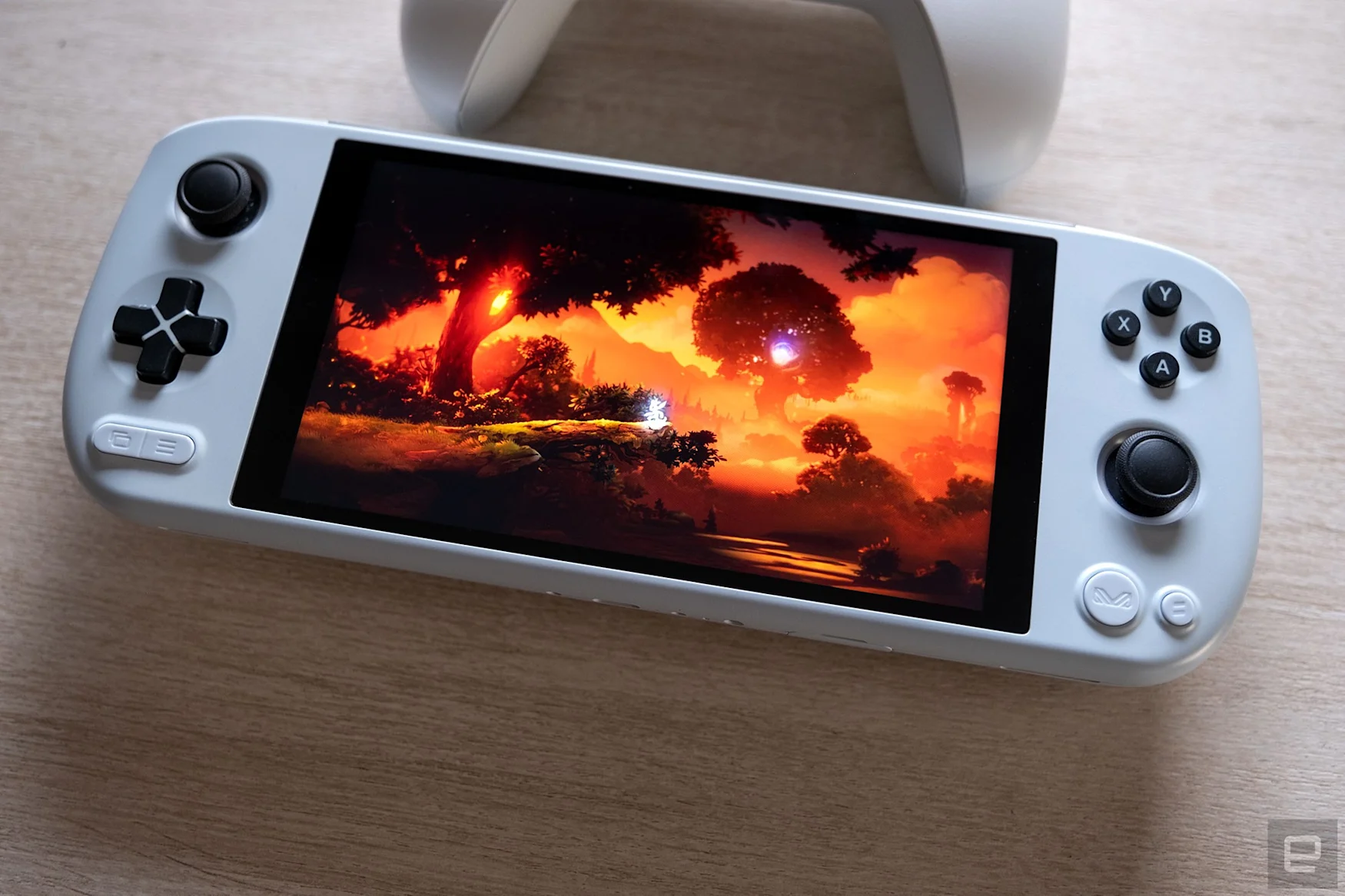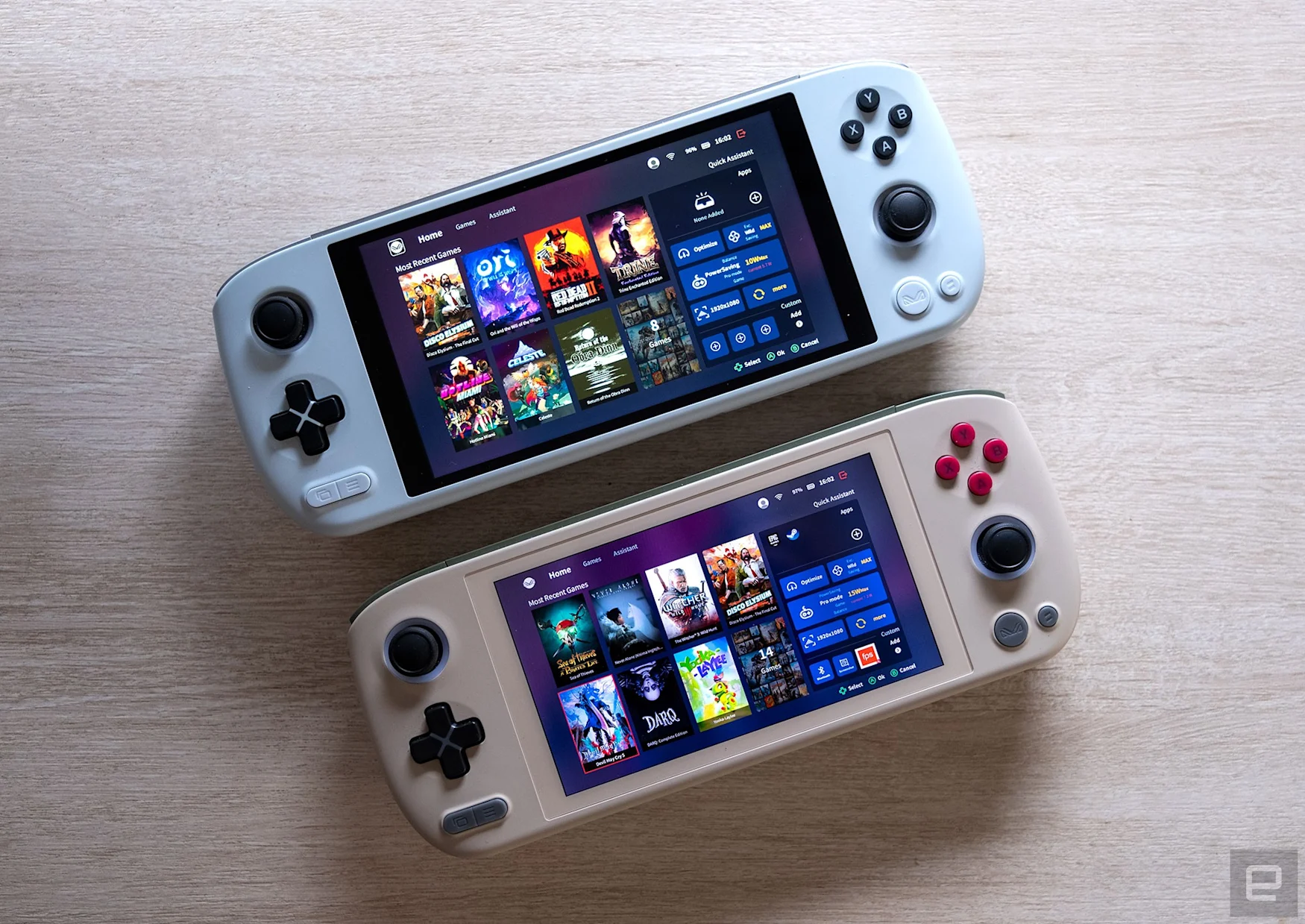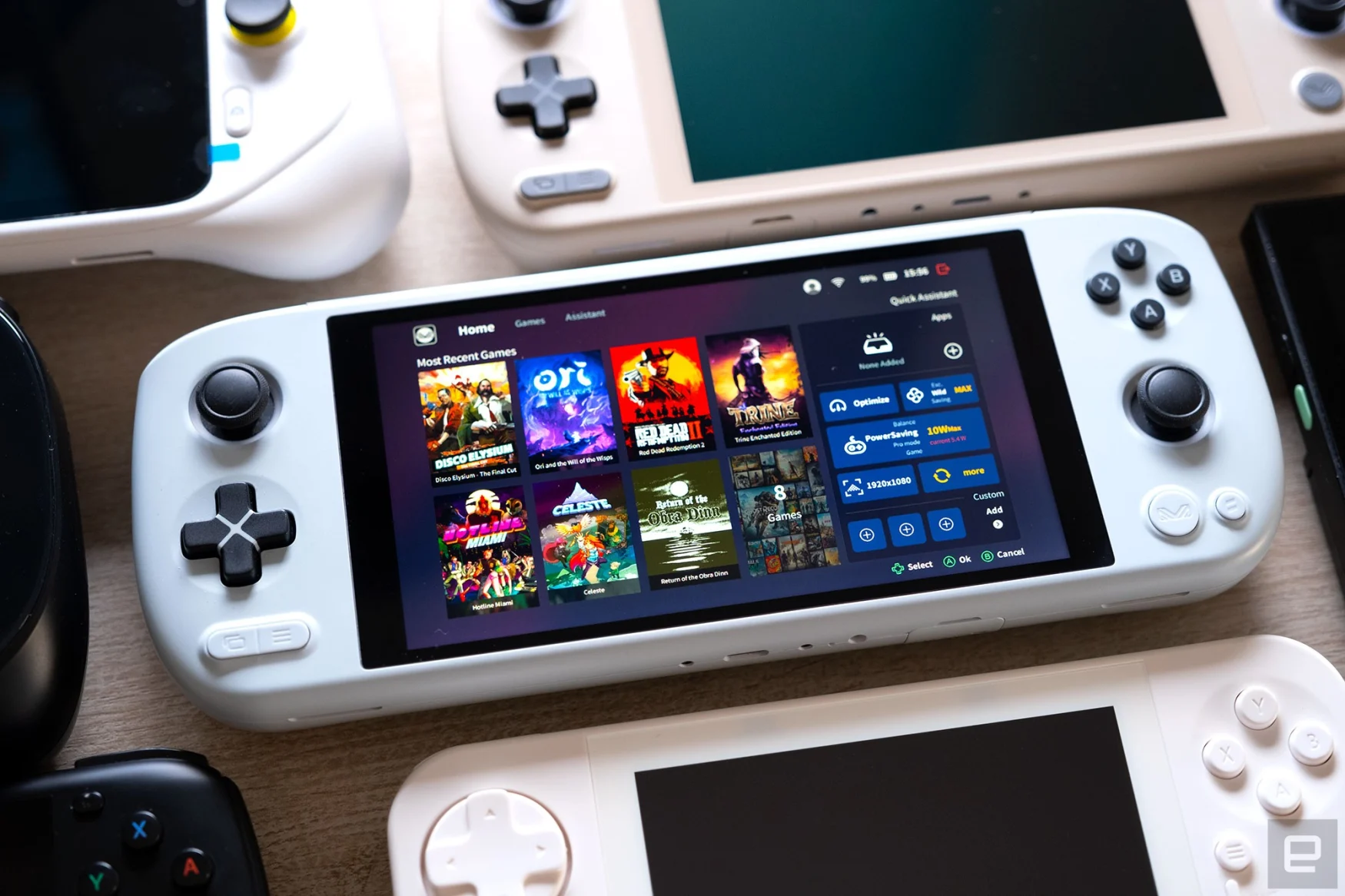If you’ve been following the handheld PC craze of late, you’ll know it’s a very kinetic category. And with ASUS throwing its hat in the ring, expect to see even more gaming handhelds trying to steal a bit of the Steam Deck’s lunch. Ayaneo, a relatively unknown player just a couple of years ago, has become one of the more prolific names in this space and its newest handheld – the Air Plus – is its latest effort to tempt folk over to the warm waters of portable PC gaming.
If the Air Plus looks familiar, that’s because it’s the third iteration of Ayaneo’s “Air” series and it comes with a choice of either AMD or Intel chipsets. The model we’re looking at here has the Ryzen 6800U processor meaning it’s technically very similar to the Ayaneo 2 we reviewed in Spring. Why make two handhelds with very similar specs? Because many people want the performance of the Ayaneo 2 in a more portable formfactor. While both are portable in the broadest sense of the word, the Air Plus is a shade smaller than a Nintendo Switch (albeit somewhat thicker), unlike the Ayaneo 2 which has a profile closer to the Steam Deck.
We should clarify right up top that this generation of Windows-based gaming handhelds don’t come cheap. While the base/64GB Steam Deck costs $400, the entry level Ayaneo Air Plus will set you back $790 for early birds before it retails for $979. That’s a lot more money – even if you chose the Steam Deck with the same internal storage (512GB), that would still only cost $649. That said, a lot of people really don’t like the size and weight of Valve’s handheld and appreciate the extra flexibility and power most of these alternatives offer. The success of Ayaneo’s last Indiegogo campaign tells us there’s an appetite for these devices regardless.

Photo by James Trew / Engadget
While size is a key selling point here (the Steam Deck is over 2 inches wider and an inch taller), perhaps more importantly, Valve’s handheld is over 5oz (145g) heavier. That extra heft does allow for more controls — there are no touchpads or rear buttons here. That said, the Ayaneo sneaks in a few clever controls along the top and on the lower edge for tasks like bringing up the onscreen keyboard or jumping out of Ayaspace to the desktop. The Air Plus also sports two USB-C ports which opens up the possibility to use peripherals at the same time as charging it.
The Air Plus isn’t quite a straight processor upgrade from the Air Pro — there’s also a larger battery (46.2Wh up from the Pro’s 38Wh and the original Air’s 28Wh), along with a new 6-inch 1080p display. There are also some other minor cosmetic tweaks that put the power button and headphone jack on the left and right respectively – the inverse of the models before them. The Plus is also about half an inch (13mm) wider than the original Air and Air Pro, which means if you had a case for one of those, it won’t fit the new model, sorry.
The first time you turn on the Ayaneo Plus, you’ll go through a minor bit of Windows setup. After that you’ll be dumped into Ayaspace, the company’s launcher that is designed to make the experience feel a bit more like a console than a tiny PC. It’s worth pointing out that Ayaspace is functional but you’ll regularly find yourself dealing with Windows. Navigating it is easy enough, with the left analog stick controlling the mouse aided by a physical shortcut button up top that brings up the on-screen keyboard. But it’s also not the smoothest experience if you’re coming over from something like the Steam Deck.

Photo by Aaron Souppouris / Engadget
For the most part, compatibility with the Air Plus should be greater than that of Valve’s rival, just by virtue of it running vanilla Windows. And as true as that is, you can still find yourself hitting a few bugs and glitches. When I installed Red Dead Redemption 2 (RDR2) I had to google around to find out how to enter full screen mode (hint: change the graphics API in advanced settings to DirectX 12). When I tried to install Hotline Miami, I was prompted to install the .NET framework, which is about as fun as it sounds and then it loaded in a window far too big for the display (using Ayaspace’s resolution picker and then alt-tabbing out and back into the game fixed).
Quirks like this are definitely the exception not the rule, but common enough that if you’re looking for that dedicated gaming console experience, know that it’s not quite there yet. You can disable Ayaspace if you wish and use something like Steam’s Big Picture mode if that’s where your games are. You could also just launch things right from the desktop, too. But for all its shortcomings, Ayaspace does have some handy features and is a decent experience most of the time. Some industrious folks have even managed to get SteamOS running on Ayaneo devices, but the compromises still don’t make it an attractive alternative. After all, once you’re in a game you soon forget about the OS behind it.
However you get there, once launched, everything look great on the 6-inch IPS display. It’s a shame that it’s not an OLED panel like the one on the Air Pro, but the larger size more than makes up for it, and it’s nice and bright with a decent contrast ratio and color reproduction. Side by side with the equally-sized display on the Ayn Odin, the two are pretty close, but the Ayaneo is a little more vibrant.

Photo by James Trew / Engadget
I’ve been chipping away at Disco Elysium for too long now, but having the chance to bring it with me on my travels with the Air Plus has exponentially increased my play time. While it’s not the most processor-intensive game, its unique art style looks fantastic here, and it runs at a full 60 fps at720p using just 10W TDP (thermal design power) – broadly speaking the setting that determines the amount of power you’re willing to give to the CPU at the expense of battery life. With these settings I was typically getting about three hours of play time per charge.
With something more intensive, like RDR2, you’ll have to jack the TDP up as it won’t run smoothly at 10W. With medium settings and even just 12 TDP I was enjoying 40-50 fps and about 2.5 hours of battery life. If I wanted Arthur’s expeditions up into the snowy mountains to look extra slick, 15- or 20W TDP would make 1080p and 60 fps possible but with a severe hit on play time – dropping down to about 1.25 hours. This can reach back up to 2 hours if you sacrifice either fps or drop back down to 720p.
So yeah, that’s not a fantastic outlook for more demanding games on higher settings, but with a few minor concessions you can still have a great experience, one that will see you through a good chunk of a flight or kill a lazy afternoon without having to hangout near an outlet. If you’re into less demanding games like Persona 4 Golden or certainly things like Hotline Miami, Trine or Celeste you can likely get away with a lower TDP and flirt with around four hours of play time. There’s enough anecdotal evidence that the Steam Deck can often run games well at lower TDPs, giving it longer play times for certain titles, but either way these machines are all power hungry right now.

Photo by James Trew / Engadget
For the brave, the Plus will go up to a maximum of 28W TDP, which means it can run quite a lot of AAA titles at higher settings, but you’re going to want to do that while plugged in. And, arguably, that defeats half the purpose of a portable device. But if you want to bring your games with you when you travel, rather than rely on WiFi for streaming, or simply prefer to play on something like this even when at home on the couch (which is me, to be fair), this is obviously less of an issue. In fact, right now, one could argue that these handhelds are most attractive to those looking for a hybrid option that allows them to break free from the PC even if that is just to play in the lounge and take on the odd flight.
Regardless of your motives, if you’re excited by handheld gaming PCs, then the Air Plus is a competent, if decadent alternative to the Steam Deck that offers generally higher performance. If Ayaneo can refine the software experience and, (at least going forward), the price, then this whole category could get a lot more interesting.
Credit: Source link


Comments are closed.